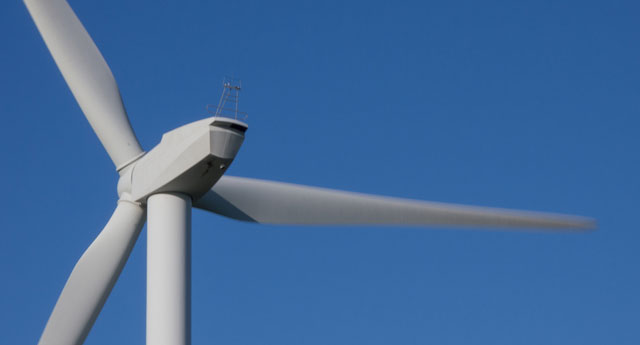
South Africa’s first wind farm was built outside Darling, up the coast from Cape Town. Its four turbines sit on a hill, looking towards the ocean. At peak capacity, they generate 5,2MW, enough to power 700 houses. The only sound they make is a soft whoosh as their giant white blades rotate.
At 50m, they are the tallest objects along the coastline. But the new generation of turbines will be double and triple their size.
Nicolas Rowland, a director of the farm, said it had faced great hurdles as it was built before government approved the building of wind farms.
“This is a very competitive environment, where economies of scale play a defining scale,” he said. The small size of the Darling plant, therefore, meant it was more of a demonstration model of the technology
Viewed this way, the farm has had a big impact. “Darling has benefited the wind industry in various ways. By giving the public and other stakeholders an up-close view of the turbines in operation, it has alleviated many of the insecurities and concerns that lobby groups have wrongfully advertised,” he said.
Each of the wind farms has to undergo an environmental impact assessment, when locals have a chance to raise their concerns.
The biggest concern has been about the turbines looking out of place in nature. A proposal to build turbines outside Grahamstown was delayed by game farmers who said they “did not look natural” and would affect tourism.
Bids for renewable energy have made South Africa a choice destination for wind energy. International expertise has come to the country and the necessary due diligence has been done by banks, laying the groundwork for future projects.
“There is great confidence in the industry, thanks to a process recognised worldwide for being a solid platform to develop a flourishing industry in the country, if not on the continent,” said Rowland.
The Darling development came just before South Africa committed to reducing its carbon emissions by 34% by 2020 at the Copenhagen climate change conference in 2009. With Eskom producing half of the country’s 550 tonnes of carbon emissions, renewable energy production became a focus of this effort.
And as part of its World Bank loan for the Medupi and Kusile coal-fired plants, Eskom was required to build two renewable-energy plants, one wind and one solar. Eskom’s 100MW Sere wind farm recently received the go-ahead from the National Energy Regulator. The R2,4bn farm is also located in the Western Cape and will start generating power next year. Its 46 turbines will have a life span of 20 years, and will produce enough power for 97 000 homes.
Government backing
At the same time, the energy department has created its own renewable energy programme, the renewable energy independent power producer procurement programme. This allocated 3 725MW of energy to renewable projects, which was split into three bidding phases with a R75bn budget. Medupi is set to cost more than R100bn and will produce 4 800MW. The full energy plan for South Africa calls for 8 400MW of wind generating capacity over the next two decades.
The money for this plan is raised by private funders and some local bodies such as the Industrial Development Corp. Eskom then signs a deal with each producer to use their power at the price they bid on for the next two decades.
The cheapest bid was to supply electricity at 80c/kWh. Eskom sells power at just under R1/kWh, and Greenpeace has calculated that the full cost of energy from Medupi could be R1,20/kWh.
Strong government backing has made the programme attractive to foreign investors. René Dinesen, the Danish ambassador, said: “Industry and investors need to know there is a guaranteed market at a good price and the government support of the programme here has given that.”
Denmark is a world leader in wind energy and will soon get a quarter of its power from wind-driven turbines. They were introduced four decades ago in a similar manner to South Africa’s.
“The government started passing regulation, with tariffs and taxes that would reflect the external cost of fossil fuels,” Dinesen said. It then invested in centres of excellence, which built the industry.
South Africa was lucky, he said, because the technology was mature, unlike many renewables. It meant it could skip the costs of research and development and start building.
The local-procurement stipulation for projects was also forcing companies to investigate local production, he said. In the first phase, 25% of all funds must be spent internally, rising to 35% and 45% in the next phases.
Saliem Fakir, the head of the living planet unit at the World Wide Fund for Nature, said wind power’s quick construction phase made it perfect in the current energy crunch.
“We have an energy crisis with a low margin and this is a quick solution. The window should be opened up for more wind,” he said.
That would help to create enough demand for a competitive local industry. Up to 60% of all the money needed could be local, and spent on labour and locally made technology. But the high-end technology, such as the mechanism at the top of the towers that holds the blades, would still come from overseas.
“We need local demand for two 400MW plants a year for the next 20 years to allow full localisation,” Fakir said. The industry is also in a global market, so would have to compete with other countries.
Localised production has already started. A R300m factory broke ground in Kouga, outside Port Elizabeth, this month. It will produce the towers for wind turbines and starts production in November.
Two other companies have indicated that they could build local plants, including Suzlon, India’s second-largest wind turbine manufacturer.
Port Elizabeth will be home to many of the wind farms. One of these, the Red Cap Kouga wind farm, will have 32 turbines generating 80MW by next year. The community owns 26% of the farm through a community trust. Red Cap said the farm would bring R250m into the area over its life span.
Dirk de Vos, a renewable energy expert in Cape Town, said wind generation was big news for rural communities, which otherwise had no industry. — (c) 2013 Mail & Guardian
- Visit the Mail & Guardian Online, the smart news source
- Image: Fionaandneil/Flickr




